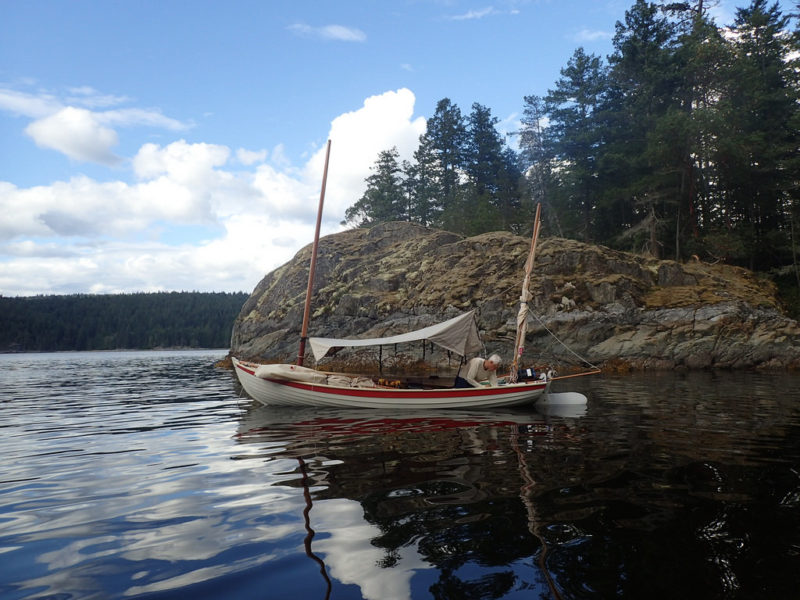 Tim Yeadon
Tim YeadonThe yawl rig has advantages beyond those for sailing. The two masts support a fly that can be set open for shade and a cooling breeze, or…
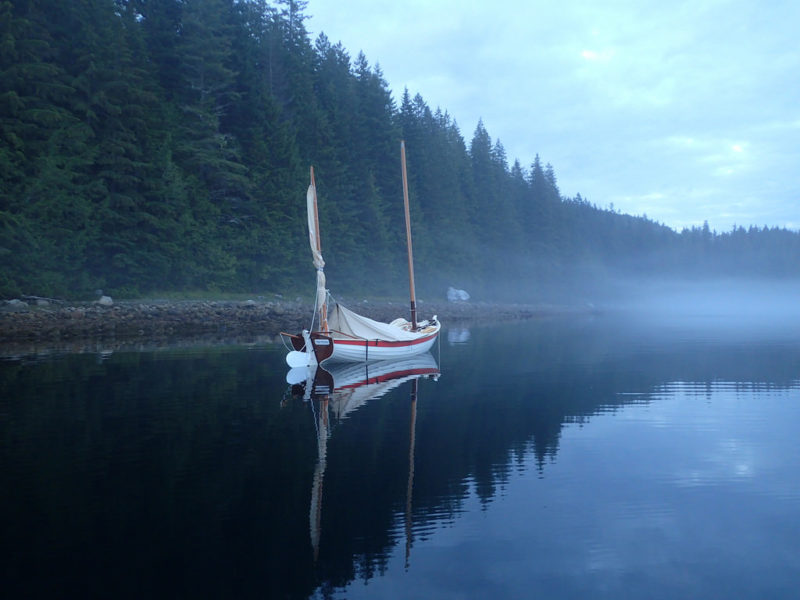 Tim Yeadon
Tim Yeadon…snugged down to keep wind, rain, and bugs out.
Alex Zimmerman lives in Victoria, British Columbia, just a half mile from the shores of Haro Strait, a channel that overlaps the border between Canada and the U.S. From the beach nearest his home the American San Juan Islands lie 7 miles to the west, the Canadian Gulf Islands 7 miles to the north. It’s a place synonymous with boating. Alex had done a lot of sea kayaking in the area and the years of paddling were getting to his shoulders, so he decided to switch to a boat that he could row and sail.
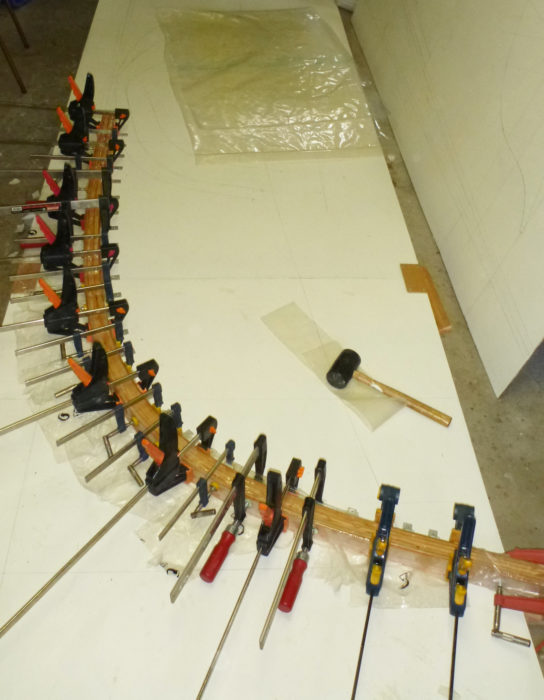 Alex Zimmerman
Alex ZimmermanThe stem was laminated directly on the lofting. Metal angle brackets screwed in place along the the inner curve created the form that the lamination was clamped to.
He took an interest in an updated design of a traditional Whitehall, built the boat, and cruised with it, solo and in the company of other boats, for seven years. He explored many miles of BC’s coast with the Whitehall, and it served its purpose, but as his experience grew, so did his dissatisfaction with the boat. It was time to build something better.
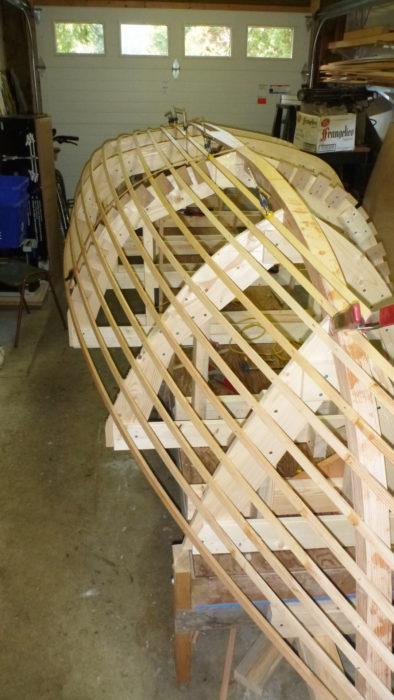 Alex Zimmerman
Alex ZimmermanBattens mark the placement of the 11 strakes. The tabs on the third mold show where the battens corrected a problem in the preliminary design.
The garage in which he would build the boat set the maximum length at 18′, and he had a number of other requirements: a lug yawl rig for its practicality, built-in flotation tanks for safety’s sake, space for sleeping on the floorboards, a centerboard to avoid the risks posed by a daggerboard, and a curve from keel to stem that would take kindly to beaching. He wanted a boat that could carry more sail when the breeze picked up and a rig that could point higher than the Whitehall and make better progress to windward in rough water. The old boat would point fine in flat water, but would fall off at least 10 degrees as it got rougher.
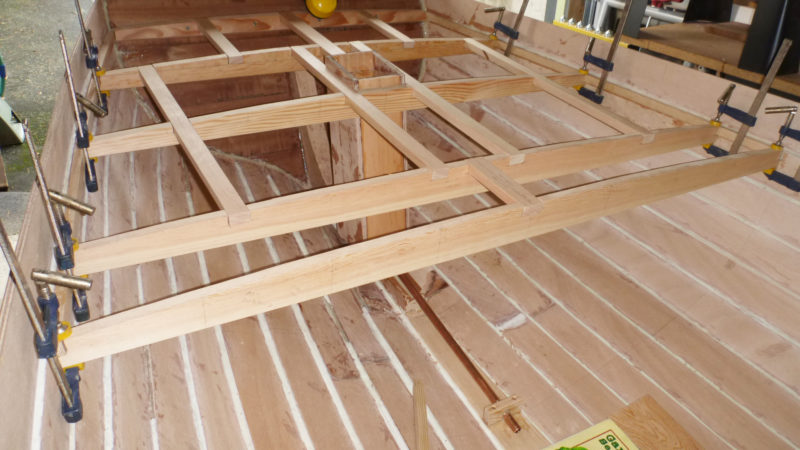 Alex Zimmerman
Alex ZimmermanCopper tubes drain water from the mast-step boxes to the cockpit where it can be pumped out.
None of the designs he studied seemed to fit the bill, so he decided to design the boat himself. During his time in the Canadian navy, he had worked as a maritime engineer, so he knew enough about hull design to take on the challenge. He drew the boat using a CAD program, and then built a scale model at 1″ to 1′ to better see the form he had created.
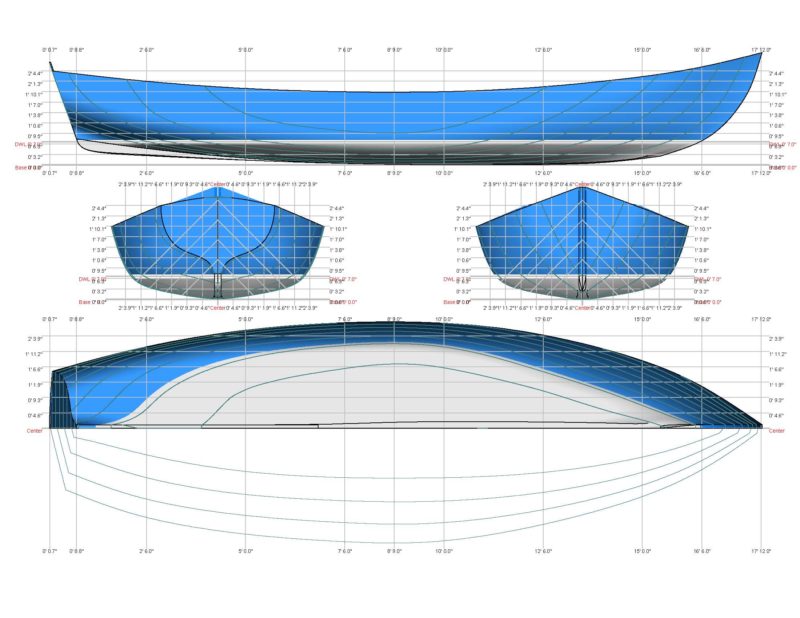 Alex Zimmerman
Alex ZimmermanThe lines for FIRE-DRAKE
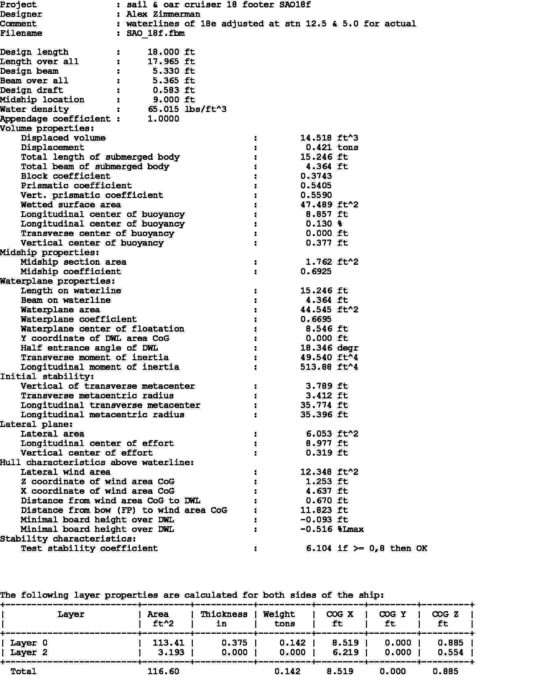 Alex Zimmerman
Alex ZimmermanSome of the hydrostatics for FIRE-DRAKE
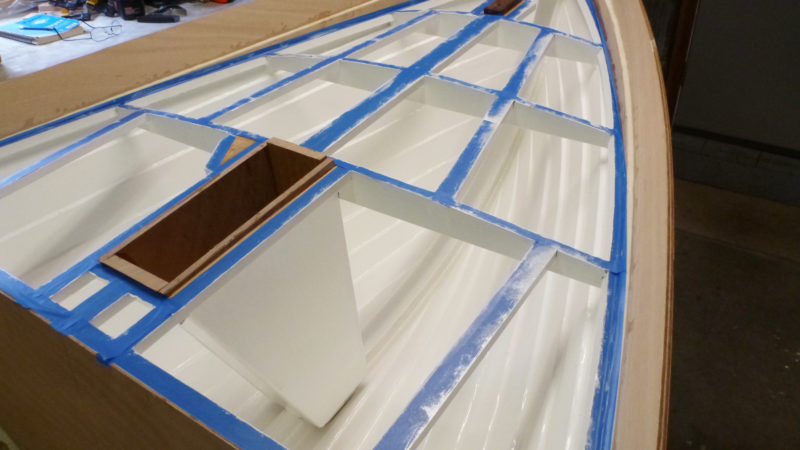 Alex Zimmerman
Alex ZimmermanRaising the mainmast is eased by the elongated box that guides the heel to the step as the mast is brought upright.
As Alex was making the final adjustments to the design, his friend Tim Yeadon began building the first of Eric Hvalsoe’s Hvalsoe 18s (later reviewed in the June 2016 issue of Small Boats Monthly). Alex liked the design and believed it would meet his requirements, but Eric didn’t want make his design available until he’d had a chance to see how Tim’s 18 performed. Alex had already invested a lot of time and effort in his own design and decided to proceed with building his boat. He began work in January 2015.
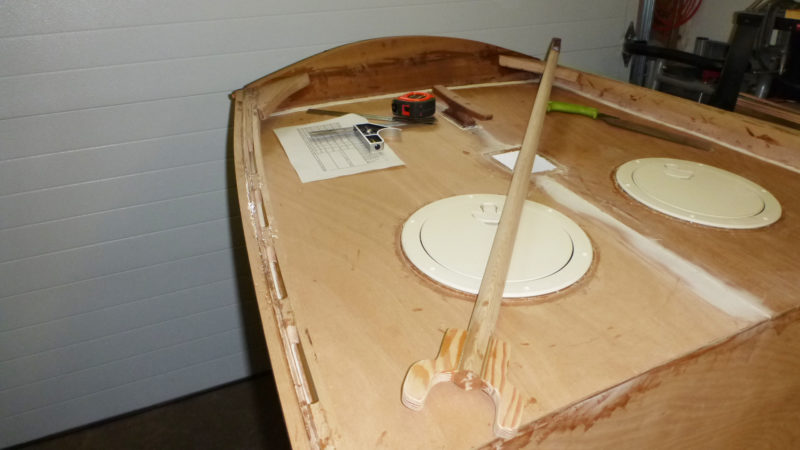 Alex Zimmerman
Alex ZimmermanThe aft compartment is sealed with watertight hatches for flotation and dry storage.
He made the molds, set them up on a strongback, and sprang battens to line off the hull for glued-lap plywood construction. Stepping back from the form he noticed that the third mold from the bow was pulling the battens in, creating a flat spot. It hadn’t shown up in the scale model, but with another look, he did find a view in the CAD drawing that revealed the problem. In his efforts to achieve the ideal angle of entry, he had pinched the bow slightly. Alex freed the battens from their fastenings at the third mold, and they all popped out and faired themselves. He added some tabs to the molds to keep the battens where they wanted to be.
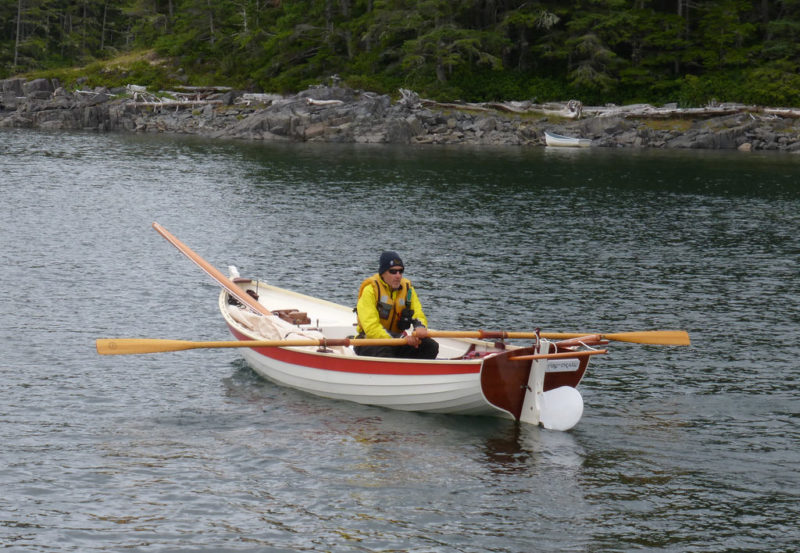 Dave Lesser
Dave LesserFIRE-DRAKE sails well to windward, but there are times when it’s best to drop the rig, retract the centerboard and rudder, and row.
Alex used a NACA (National Advisory Committee for Aeronautics) foil section in designing his new centerboard—the airfoil shape, thicker and broader than that of a typical centerboard, would provide better upwind performance, particularly in rough water. To assure the board was properly shaped, he gave his CAD program files to Matt Weaver, who could use a CNC machine to carve the board.
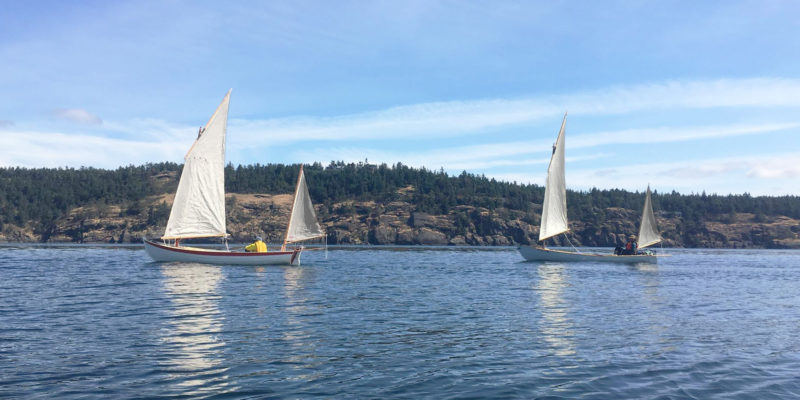 James McMullen
James McMullenFIRE-DRAKE (left) ghosts along with Tim Yeadon’s HAVERCHUCK.
Alex finished his boat, christened FIRE-DRAKE, in June 2016. By that time, Tim Yeadon had also launched his Hvalsoe 18, HAVERCHUCK. They both did a few shakedown cruises and in July of 2016 traveled north together along the section of the Inside Passage tucked between Vancouver Island and the BC mainland. They covered 300 nautical miles and encountered a wide variety of conditions—a good test for both boats. Alex discovered FIRE-DRAKE is “more work to row than my previous boat, but I knew it would be, with 10” more beam and more wetted surface. She stands up well to her sail area and sails to windward as well as I’d hoped.” He came back from the trip with some minor improvements to make, but added, “I think I got the fundamentals right and met my design objectives.”![]()
Have you recently launched a boat? Please email us. We’d like to hear about it and share your story with other Small Boats Monthly readers.
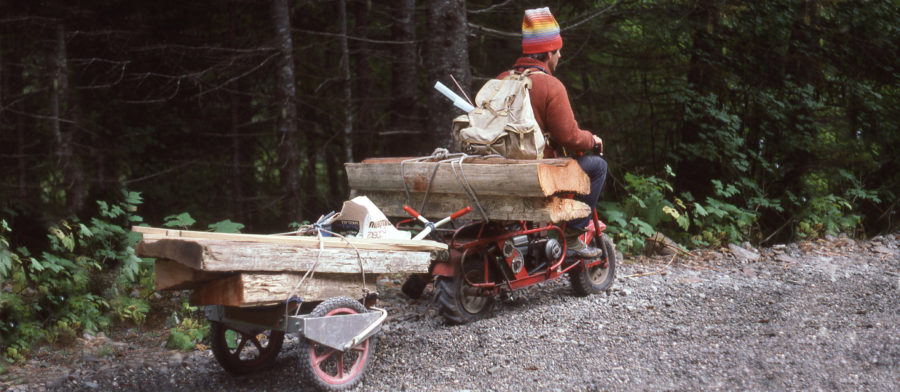
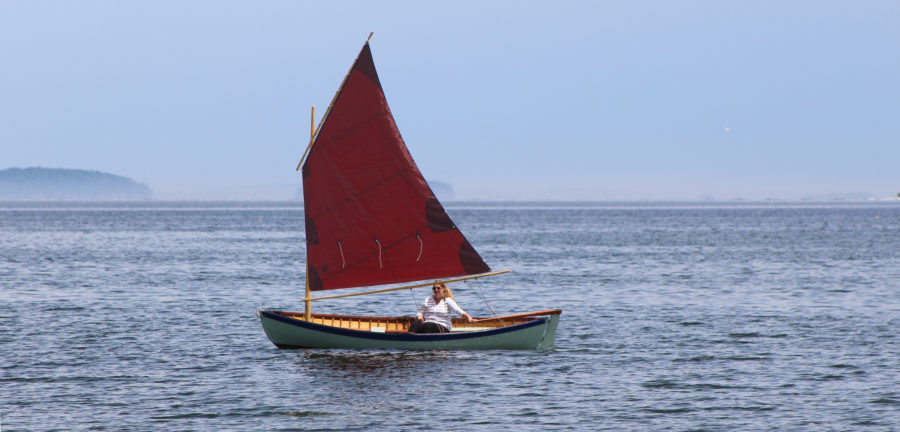
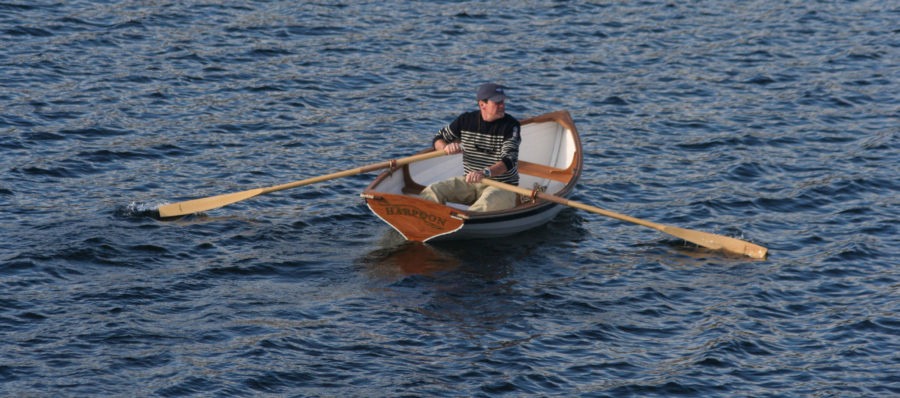
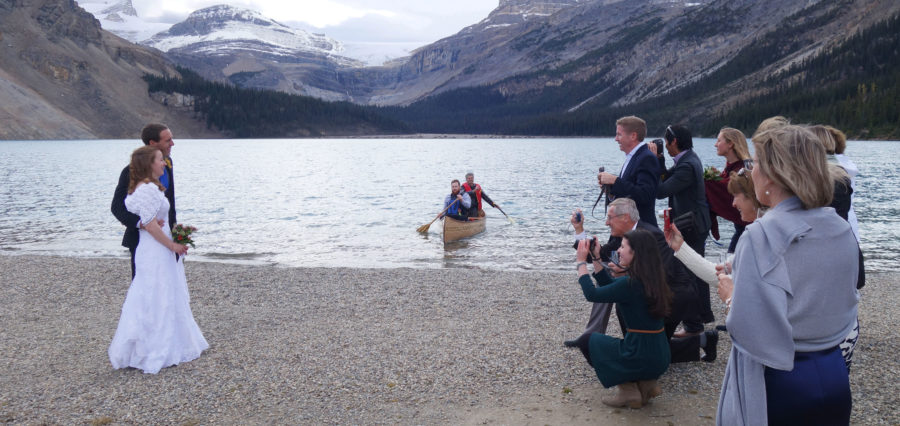
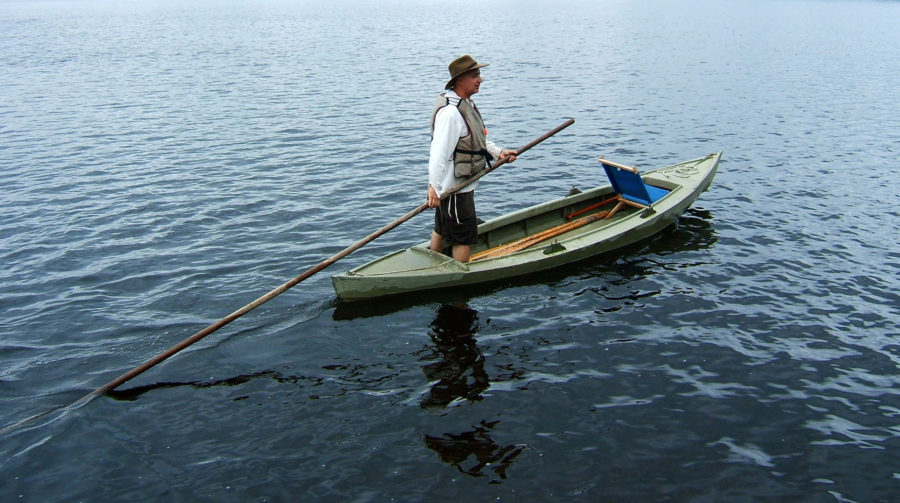
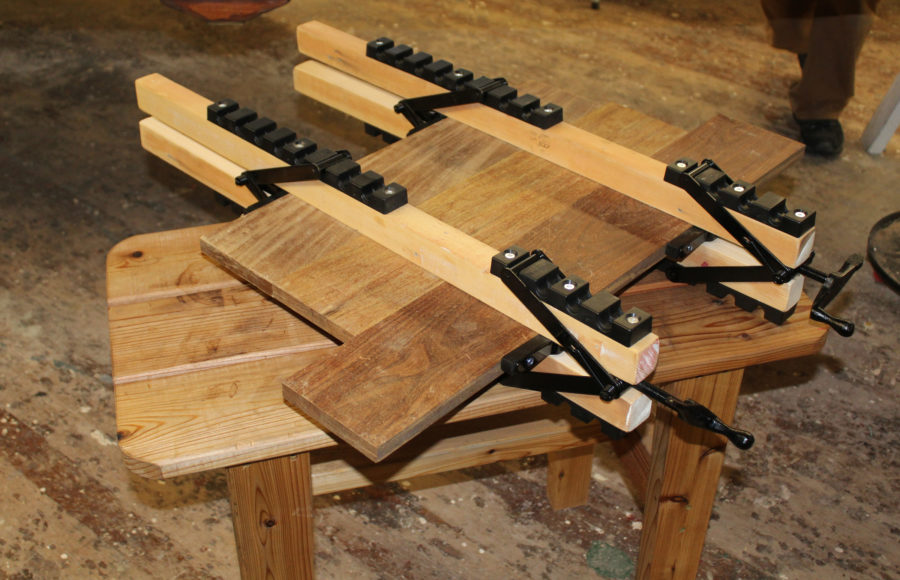
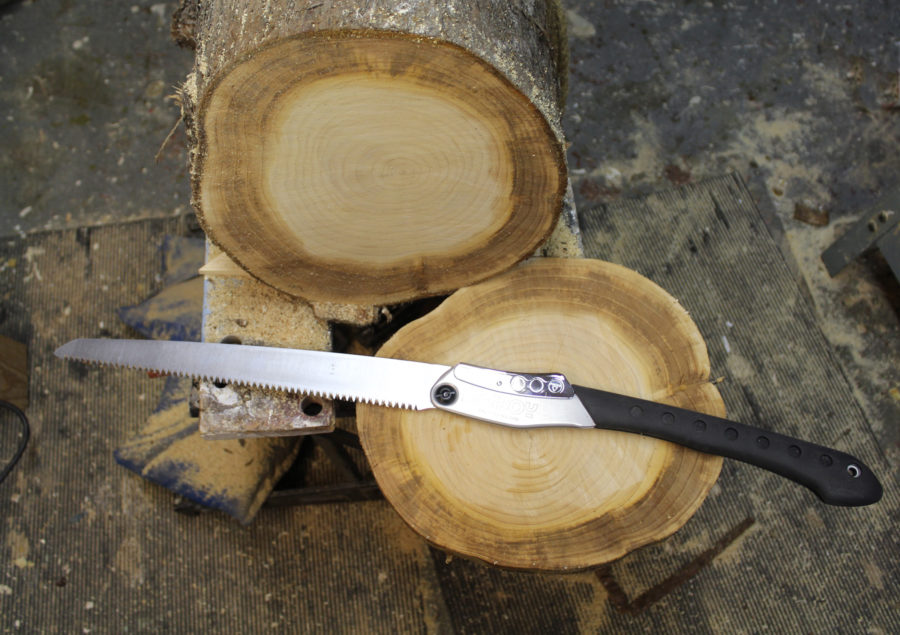
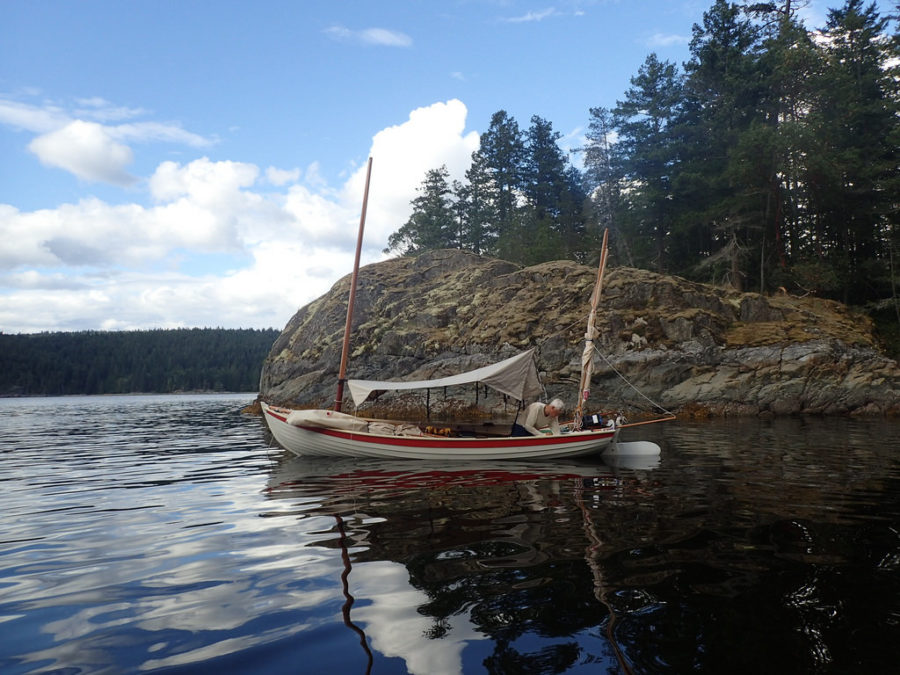
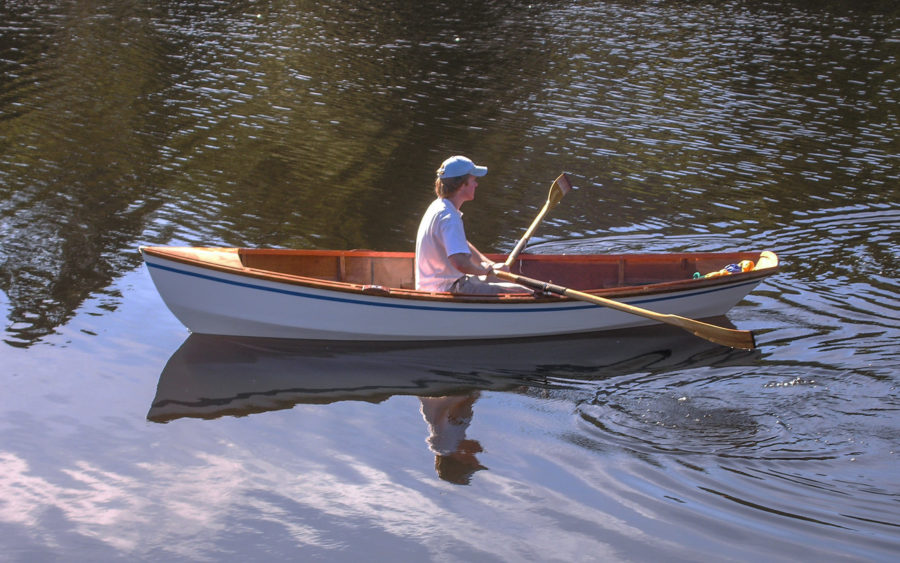
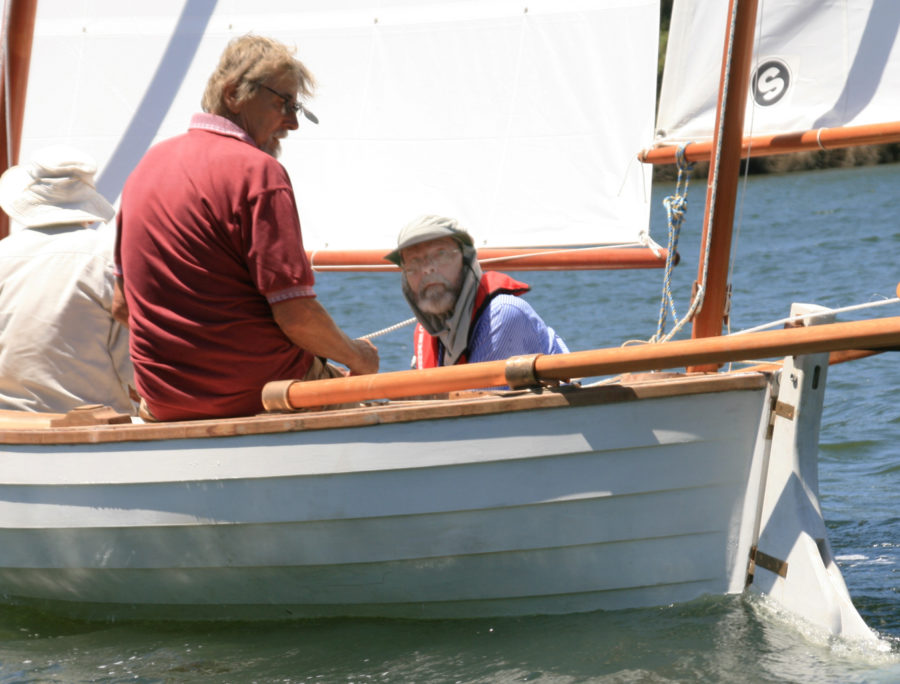
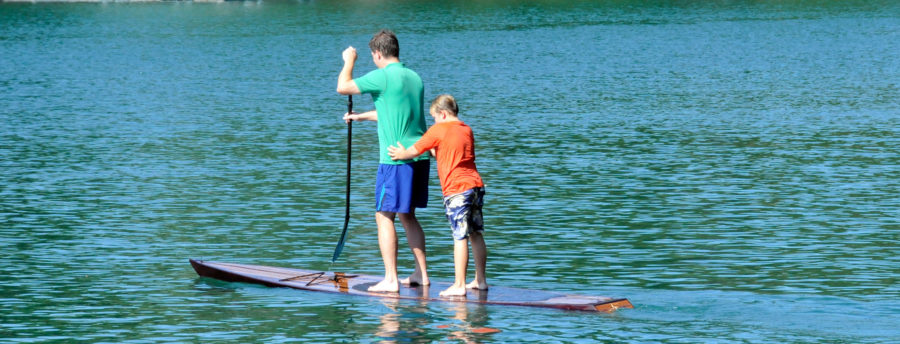
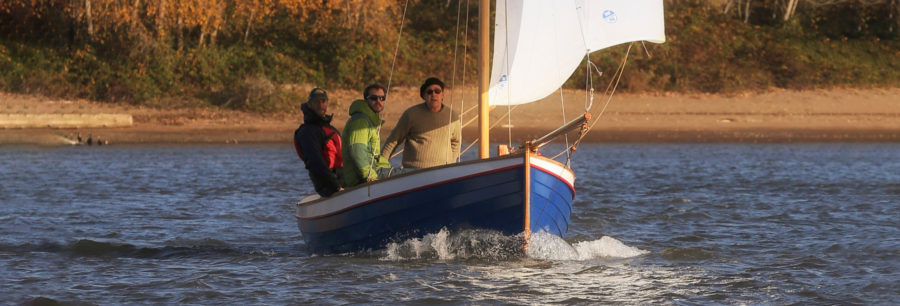
Beautiful boat. Good luck!
It maybe an unfair question, but how about some comparison’s between this fine boat and the Hvalsoe 18?
Dennis,
I actually did such a comparison in the thread on Wooden Boat Forum that I started about our trip last summer. I may be a little biased because it is from my experience and perspective, but I tried to be objective.
Thanks! That’s an inspiring story. BTW, do you know Fire Drake’s sail area?
Peter,
Apologies for the late reply, but is about 115-120 sq ft. About 100 sq ft in the fore sail and about 15-17 sq ft in the mizzen. I would need to measure the actual sails to come up with an exact number.
I was privileged to get a tour of FIRE DRAKE at Port Townsend last summer. What really impressed me was the attention to detail in working out all the systems on the boat. I hope that there might be a follow-up piece.